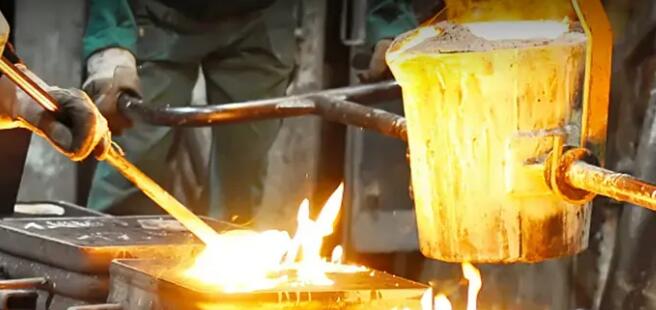
- English
- Español
- Português
- русский
- Français
- 日本語
- Deutsch
- tiếng Việt
- Italiano
- Nederlands
- ภาษาไทย
- Polski
- 한국어
- Svenska
- magyar
- Malay
- বাংলা ভাষার
- Dansk
- Suomi
- हिन्दी
- Pilipino
- Türkçe
- Gaeilge
- العربية
- Indonesia
- Norsk
- تمل
- český
- ελληνικά
- український
- Javanese
- فارسی
- தமிழ்
- తెలుగు
- नेपाली
- Burmese
- български
- ລາວ
- Latine
- Қазақша
- Euskal
- Azərbaycan
- Slovenský jazyk
- Македонски
- Lietuvos
- Eesti Keel
- Română
- Slovenski
- मराठी
- Srpski језик
What are the forging processes for auto parts forging?
2024-06-15
Auto parts forging is a processing method that uses forging equipment to pressurize metal blanks, causing the auto parts blanks to undergo plastic deformation to obtain steel castings with certain physical properties, shapes and specifications. Forging (forging and forging) One of the major components of stamping dies.

Through forging, it can eliminate defects such as loose castings caused by the metal in the smelting process and improve the external economic structure. At the same time, due to the preservation of complete metal streamlines, the physical properties of steel castings are generally better than castings of the same material. pieces. For key parts in machinery and equipment with high loads and poor working conditions, steel castings are mostly used, except for the simpler ones that can be cold-rolled plates, aluminum profiles or weldments.
Free forging. It refers to the production of simple practical tools, or the direct application of external force to the blank between the upper and lower anvils of the forging equipment to deform the blank to obtain the required geometric shape and internal quality of steel castings. Processing methods. Steel castings made by free forging are called free castings.
Free forging is mainly based on the production of large quantities of small steel castings. Forging equipment such as forging hammers and four-column hydraulic presses are used to shape and process the blanks to obtain qualified steel castings. The basic process flow of free forging includes upsetting, drawing, punching, laser cutting, bending, twisting, staggered shifting and forging, etc. Free forging uses all hot forging methods.
The forging industry is an important link in the national economy. All production fields are inseparable from forging. Large parts such as aircraft, automobiles, ships, power generation equipment, petrochemical equipment, etc., and small parts such as small components in watches and clocks are all produced using forging methods. Processing covers a very wide range.
Preparation before forging includes raw material selection, material calculation, blanking, heating, calculation of deformation force, equipment selection, and mold design.
Before forging, you also need to choose a good lubrication method and lubricant. Forging materials cover a wide range of materials, including various grades of steel and high-temperature alloys, as well as non-ferrous metals such as aluminum, magnesium, titanium, and copper. They include bars and profiles of different sizes that are processed at one time, and a variety of Ingots of various specifications; in addition to using a large number of domestic materials suitable for our country's resources, there are also materials from abroad. Most of the forged materials have been listed in national standards, and many are new materials that have been developed, tried and promoted. As we all know, the quality of products is often closely related to the quality of raw materials. Therefore, forging workers must have the necessary material knowledge and be good at selecting the most appropriate materials according to process requirements.



